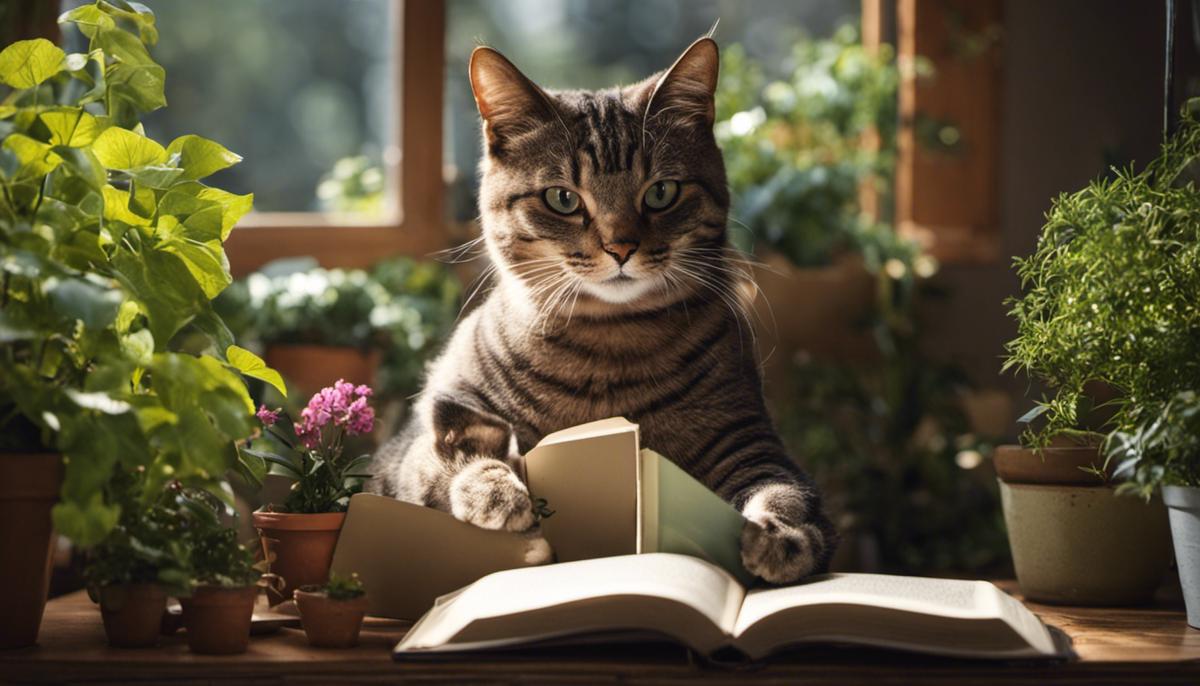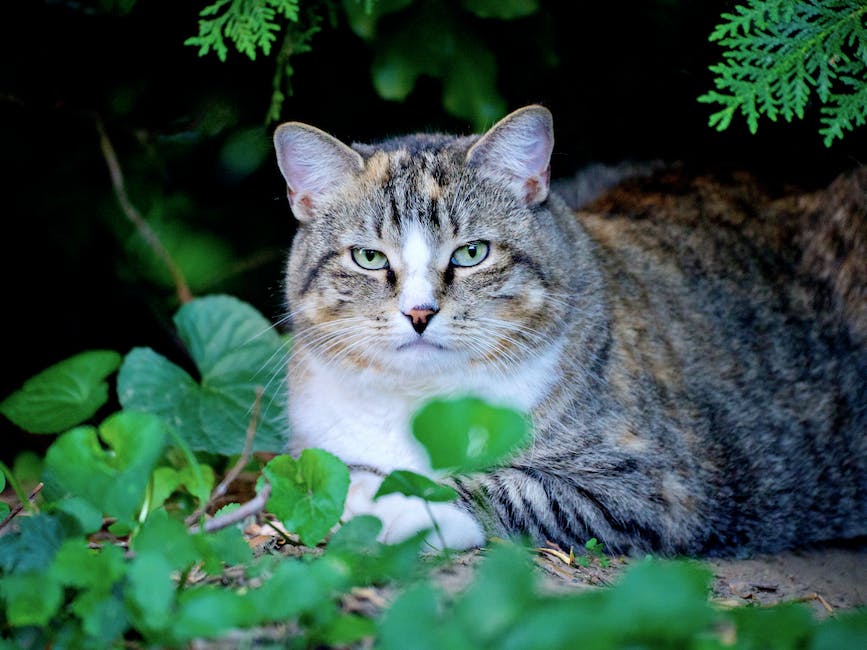Efficient Ways to Keep Your Cats Away from Indoor Plants

Many cat owners find themselves faced with the challenge of protecting their lush houseplants from their curious feline friends. Understanding why cats are naturally inclined to interact with plants can offer insights into addressing the issue effectively. This involves researching feline behavior and the various instincts that drive your cat’s interaction with the indoor greenery. In addition to understanding your pet’s behavior, it might be beneficial to learn about certain plants that naturally repel cats. Sprucing up your home with these cat-repellent plants can help keep your green space safe. Finally, discovering different methods to create physical or sensory barriers could prove crucial in deterring your feline friends from your plants. This could be through the use of plant pot covers, netting, or specific scents that cats find off-putting.
Understanding Cat Behavior
“The Fuzzy Feline Conundrum: Why do Cats Love Your House Plants?”
First, we must remember that cats are, above all else, curious creatures. Fueled by curiosity, they explore their environment using their sense of sight, smell, and touch. As humans, we might view house plants as mere decorations, but for our feline friends, these green beauties represent a jungle waiting to be discovered, a minuscule forest that brings the outdoors to the indoors.
Cats are instinctively drawn to plants for a number of reasons. At their core, despite their domesticated lifestyle, cats are wild hunters. House plants flutter, sway or rustle, especially when hit by a gust of wind or the brush of a tail, mimicking the movement of prey. This triggers the cat’s hunting instincts, and your once peaceful spider plant transforms into a swaying bird or skittering mouse in your cat’s eyes.
Along with their hunting instincts, cats also seek out plants for dietary purposes. While felines are primary carnivorans, they’re known for supplementing their meat diet with grass or plants. The texture and taste of greens sometimes aid in digestion, helping them throw up hairballs or other non-digestible material. Having an assortment of house plants within your cat’s reach might just be a quick remedy for those bothersome furball issues!
Watering our house plants also has unintended side effects. Cats are attracted to moisture, that’s why you often find them sneaking a sip from a dripping faucet. A well-watered plant can draw a cat like a magnet.
Lastly, let’s touch on a unique, albeit slightly strange, reason: privacy. Our homes are built to our tastes, not our pets’. Cats sometimes use plants as a form of camouflage, a safe space to observe their surroundings. In the wild, a cat would use shrubbery and grass to hide and keep an eye on potential prey or threats.
Knowing these reasons, it’s important for us as responsible pet parents to ensure our house plants are safe for our cats to indulge their curiosity. Some plants can be toxic for cats, leading to symptoms such as vomiting or, in severe cases, organ damage. Always research plants before bringing them home to ensure they’re safe for our feline family members.
While it’s not always possible to curb this natural behavior, providing safe alternatives such as cat-safe plants or interactive toys can help divert their attention. With understanding, patience, and a bit of creativity, our homes can be a safe and stimulating environment for every member of our family – even those with whiskers!

Choosing Cat-Repellent Plants
There are several ways to create a space that is both cat-friendly and plant-filled. It is not uncommon for cats to take a keen interest in plants, leaving pawprints all over a flourishing fern and transforming a pristine pot of petunias into an unkempt, disheveled mess. Understandably, this can be quite the challenge for folks trying to bring a touch of nature indoors while also attempting to cater to the needs and desires of their feline friends.
But don’t fret! There are several plants that naturally deter cats without causing them harm and can be used indoors to reclaim a bit of that much-needed plant peace. Here are some you might want to consider:
- Rosemary: This aromatic herb doesn’t tickle every person’s nose the right way, and it certainly doesn’t do it for cats either. Its strong scent is a natural deterrent for our furry friends who prefer milder aromas.
- Rue: This robust perennial with its grey-green leaves and bright yellow flowers will add a splash of color to your indoor collection while keeping kitties at an arm’s length. Rue can make cats uncomfortable, leading them to give plant-contemplated mischief a miss.
- Scaredy-Cat Plant (Coleus canina): The odor of this plant, while unnoticeable to humans unless the leaves are crushed, is repellent to cats. It’s a safe and natural way to give your curious kitties a detour.
- Lavender: Surprisingly, the soothing scent of lavender is not one your cat will appreciate. Although it’s a favorite among humans for its calming properties, cats are not fans. This means lavender can keep them from snooping in the wrong place.
- Lemon Thyme: Cats and citrus do not mix. The sharp scent of this lovely herb keeps our feline companions away, making lemon thyme an excellent choice.
- Marigolds: These cheerful blooms are a gardener’s delight and a cat’s deterrence. Their strong odor can ward off not only cats but insects as well. It’s a double whammy of goodness!
Remember, it’s not enough to have these plants alone; they must be strategically placed in your home or garden. Some thumbs swear by planting these in the pathway to the feline-favored plant spot, while others suggest creating an unwelcome mat of sorts by planting these in a circle around your precious, must-not-be-disturbed flora.
Incorporating these plants into your space will create a more harmonious environment with your furry little explorers. It ensures that your green friends enjoy a peaceful co-existence with your feline friends. But remember, at the end of the day, providing other forms of stimulation for your cat, like interactive toys or pet-friendly spaces, could be a more fitting solution.
Embrace the challenge and watch the miracle of plant-feline cohabitation happen in your own homes. Happy gardening and cat rearing, dear parent!

Creating Barriers and Deterrents
The challenge of creating a feline-friendly and bloom-filled haven can indeed be a tricky endeavor, but it is definitely achievable. Just a touch of creativity and careful planning can help keep our beloved cats safe and our green companions thriving.
Believe it or not, there are certain plants that may help deter our feline friends from venturing into the verdant areas of our homes. These plant options do not bring harm to our cats, but mainly cause a little discomfort due to unappealing odors or flavors. Since cats are often deterred by strong scents, these plants can be our secret weapons, turning our green spaces into effective physical barriers for our kitties.
One recommended plant is Rosemary. This hardy herb that graces many recipes is a marvel in keeping cats away. Its strong fragrance that we humans find delightful is less appealing to kitters, making it a suitable plant to consider.
Rue is another plant known for its cat-repelling properties. But be cautious when using Rue as it can be toxic to cats if ingested in large amounts. Always strategize the placement of these plants and monitor your pets.
The Scaredy-Cat Plant significantly lives up to its name. Its distinct smell, that is offensive to cats, makes it another perfect houseplant for this defense strategy.
Lavender, despite its soothing scent to humans, is unappealing to the sensitive snouts of our cats. Placing pots of lovely lavender around your favorite plants can keep your curious cat at bay.
Lemon Thyme gives off a scent that reminds us humans of a lemony paradise, but its sharp fragrance is not enjoyed by our feline friends. This can be included in your selection of plants, not just to keep your cat away, but also to add color and aroma to your home.
Marigolds, with their vibrant colors and strong odor, are not only lovely to look at but also help to keep our furry friends at a distance.
Remember, the strategic placement of these plants in our home plays a crucial part in achieving the right balance. We want a space that is harmonious for both our cat and our beloved plants. The goal is to make our plants inaccessible to the cat while also providing alternative forms of entertainment and stimulation. Try introducing cat toys, climbing trees, or even a designated digging area filled with cat-friendly grass or soil that can keep them busy.
Gardening and cat rearing may sound like an unusual combo, but armed with these tips and a bit of patience, we can indeed create a home that celebrates our love for greenery and our feline companions without compromising the wellbeing of either. Let the spirit of love and harmony fill your home, after all, that’s what homemaking and parenting (even to our pets) is all about. A home filled with love, respect, and mutual understanding is the sweetest home there could ever be.

Ultimately, securing your indoor plants from your cats requires a mix of behavioral understanding, careful plant selection, and the creation of effective deterrents. Equipping yourself with insights on how cats think and what they avoid can help in managing their interaction with your plants. Additionally, strategically placing cat-repellent plants around your home will naturally deter your feline friends. Finally, the use of physical or sensory barriers should not be dismissed. They offer a simple yet powerful solution to keep your plants safe, ensuring a peaceful cohabitation between your green companions and your furry ones.



